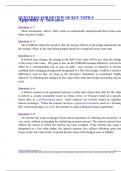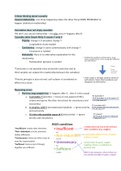Exam (elaborations)
Complete Solution Manual Intermediate Accounting 11th Edition Spiceland, Nelson, Thomas, Winchel Questions & Answers with rationales
Course
Intermediate Accounting
Institution
Intermediate Accounting
Intermediate Accounting 11th Edition Spiceland, Nelson, Thomas, Winchel Solution Manual
Complete Solution Manual Intermediate Accounting 11th Edition Spiceland, Nelson, Thomas, Winchel Questions & Answers with rationales
PDF File
All Pages
All Chapters
Grade A+
[Show more]
Preview 4 out of 2657 pages
Uploaded on
June 12, 2023
Number of pages
2657
Written in
2022/2023
Type
Exam (elaborations)
Contains
Questions & answers
Institution
Intermediate Accounting
Course
Intermediate Accounting
By: gstylish19 • 1 year ago
By: gradexam • 1 year ago
We sincerely appreciate your outstanding 5-star review of this document. Your feedback means a great deal to us!
$16.99
100% satisfaction guarantee
Immediately available after payment
Both online and in PDF
No strings attached
Question A–1






